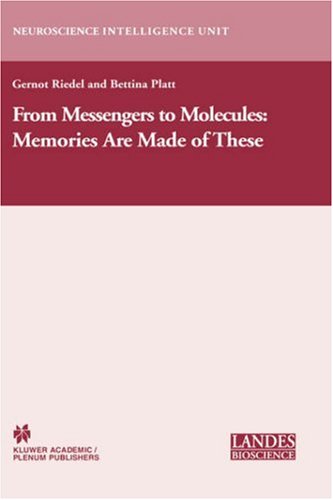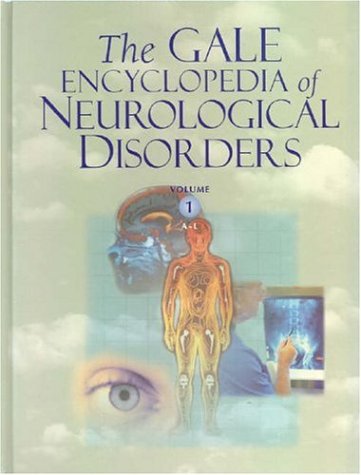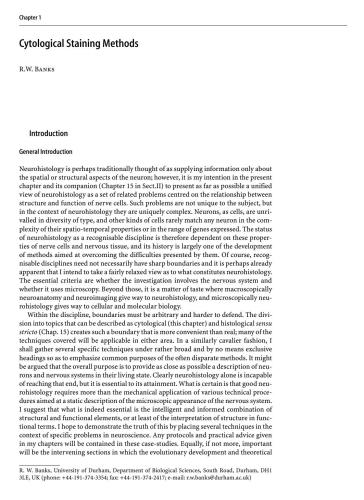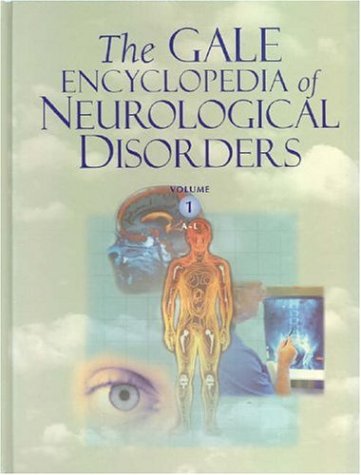Gernot Riedel, Bettina Platt9780306478628, 0-306-47862-5
Table of contents :
Unknown……Page 0
From Messengers to Molecules: Memories Are Made of These……Page 1
Copyright Info……Page 3
Dedication……Page 4
TOC……Page 5
Contributors……Page 12
Preface……Page 18
Abbreviations……Page 20
Introduction……Page 24
Ca2+ Influx……Page 25
Intracellular Release And Storage……Page 27
Ryanodine Receptors……Page 28
Neurotransmitter Release……Page 30
Long-term Changes Of Ca2+-influx Via Memory-specific K+ Channel Regulation……Page 31
Information Coding……Page 32
Long-term Modifications Of Synapses……Page 33
Synaptic Interaction And Associative Learning……Page 34
Oxygen-sensing And Hypoxic Injury……Page 35
Gene Expression……Page 36
Conclusion……Page 37
Introduction……Page 43
How Can K+ Channels Contribute To Learning And Memory?……Page 45
K+ Channels And Invertebrate Learning And Memory……Page 46
Studies In Hermissenda Crassicornis……Page 47
Studies In Aplysia Californica……Page 48
Studies In Drosophila Melanogaster……Page 49
Studies In Other Invertebrates……Page 51
Modulation Of The Slow Afterhyperpolarization (sahp) As A L&m Mechanism……Page 52
Modulation Of A-type K+ Channels As A L&m Mechanism……Page 53
Conclusion……Page 54
Acknowledgements……Page 56
Introduction……Page 62
Spatial Learning……Page 66
The 8-arm Radial Maze……Page 72
Other Spatial Learning Paradigms……Page 73
Conditioning To Context And Cue……Page 74
One-trial Inhibitory Avoidance In 1 Day-old Chicks……Page 77
Active Avoidance……Page 78
Conclusions And Remaining Questions……Page 82
Introduction……Page 95
Picrotoxin……Page 96
Bicuculline……Page 97
Gabaergic Drugs And Memory: Genotype-dependent Effects……Page 98
Gabaergic Drugs And The State-dependency Hypothesis……Page 99
Gabaergic Drugs And Memory Formation: Administrations Into Brain Structures……Page 100
Gaba-opioids Interactions……Page 105
Gaba-ethanol Interactions……Page 107
Introduction……Page 113
Anatomy Of Brain Cholinergic Pathways……Page 115
Cns Distribution Of The Muscarinic Receptors……Page 116
Alterations In Machr Expression In Behaviorally-induced Plasticity……Page 118
Muscarinic Receptors In Aging And Alzheimer’s Disease……Page 119
Which Cognitive Processes Depend On The Activation Of Muscarinic Receptors?……Page 121
Cognitive Alterations Induced By The Blockade Of Muscarinic Receptors……Page 122
Cognitive Alteration Induced By Lesions In The Cholinergic Pathways……Page 123
Cognitive Processes Associated With Changes In Cholinergic Activity……Page 125
Effects Of Direct And Indirect Selective Muscarinic Receptor Agonists On Learning And Memory: Therapeutic Implications……Page 126
Conclusions……Page 127
Neuronal Nachrs……Page 136
Localization……Page 137
Memory……Page 138
Attention……Page 140
Rewarding/incentive Effects……Page 141
Other Effects……Page 143
Acknowledgements……Page 144
Introduction……Page 148
Role Of 5-ht In Memory: Global Strategies……Page 149
Basic Neurobiological Data……Page 151
5-ht Receptors And Linkage To Second Messenger: Signaling Pathways……Page 152
Anatomical And Cellular Compartment Locations……Page 153
Receptors That Inhibit Adenylyl Cyclase……Page 155
Receptors That Stimulate Adenylyl Cyclase……Page 157
Receptors That Stimulate Phospholipase C……Page 158
A Ligand-gated Ion Channel……Page 159
New Tools For Research And Therapeutical Strategies……Page 160
Introduction: Dopamine Receptors In The Brain……Page 166
Dopamine Receptor Subtypes……Page 167
Da Receptors And Locomotor Activity……Page 168
Da Receptors And Eating And Drinking……Page 169
Da Receptors And Cognition……Page 170
Dopaminergic Depletions And Cognitive Impairments……Page 171
Intracerebral Infusion Of Dopaminergic Drugs And Cognitive Processes……Page 172
Epilogue……Page 174
Sources Of Noradrenaline In The Cns……Page 178
Signal Transduction Pathways Of ß-adrenoceptors……Page 179
Localization Of Mrna……Page 181
Factors Affecting Drug Action At Adrenoceptors……Page 182
Amygdala……Page 183
Prefrontal Cortex……Page 184
Locus Coeruleus……Page 185
Memory Studies With Adrenoceptor Agonists And Antagonists In Chicks……Page 186
-adrenoceptors……Page 189
-adrenoceptors……Page 192
Summary……Page 193
The Histaminergic Neuron System……Page 197
The Role Of The Tuberomammillary Nucleus Projection System In Neural Plasticity And Functional Recovery……Page 199
The Role Of The Histaminergic Neuronal System In The Control Of Reinforcement……Page 201
The Role Of The Histaminergic Neuronal System In The Control Of Learning And Mnemonic Processes……Page 204
Lesion Studies……Page 205
Pharmacological Approach……Page 208
Tuberomammillary Modulation Of Hippocampal Signal Transfer……Page 210
Acknowledgments……Page 212
Adenosine Receptors……Page 219
Adenosine Receptor Subtypes And Learning……Page 220
Cellular Actions Of Adenosine……Page 221
Adenosine And Synaptic Plasticity……Page 222
Paired-pulse Inhibition……Page 223
Cellular Mechanisms Of Adenosine / Acetylcholine Interactions……Page 224
Adenosine And Acetylcholine Release……Page 225
Adenosine And Glutamate Receptor Interactions……Page 226
Other Receptor Interactions……Page 228
Adenosine And Dopamine……Page 230
Trophic Functions Of Nucleosides……Page 233
Nucleotides And Synaptic Plasticity……Page 234
Atp And Synaptic Plasticity……Page 235
Summary……Page 237
Opioid Peptides……Page 269
Cannabinoid Receptors……Page 247
Cannabinoid Receptor Ligands……Page 248
Water Maze……Page 249
T-and Y Maze Procedures……Page 261
Conditioning Of Fear……Page 262
Olfactory And Gustatory Memory Paradigms……Page 263
Conclusions……Page 264
Receptors……Page 270
Effects Of Opioid Receptor Ligands On Long-term Potentiation In Hippocampal Regions (table 2)……Page 272
Ameliorating Effects Of Opioid Receptor Ligands On Models Of Learning And Memory Impairment (table 4)……Page 274
Future Expectation……Page 277
Posterior Pituitary Peptides (vasopressin, Oxytocin)……Page 279
Acth/msh And Opioid Peptides……Page 284
Hypophyseotropic Peptides (crf, Somatostatin)……Page 286
Brain-gut Peptides (cck, Neuropeptide Y, Galanin)……Page 289
Substance P……Page 293
Natriuretic Peptides, Angiotensin……Page 295
Amyloid Peptides……Page 300
Conclusions……Page 301
Introduction……Page 309
Nerve Growth Factor And The Basal Forebrain Cholinergic System……Page 310
Does Early Icv Nfg Injections Alter The Development Of Spatial Abilities In Immature Rats?……Page 312
Rats Treated On Days 2 And 3……Page 316
Discussion……Page 318
The Promiscuous Family Of Eph Receptors……Page 323
Eph Receptors Are In The Right Places And At The Right Time……Page 324
Function Of Eph Receptors In The Normal Brain: Role In Plasticity And Memory……Page 325
Mechanisms Mediating Eph Action: The First Working Hypotheses……Page 329
Concluding Remarks……Page 333
Glucocorticoids And The Hypothalamic-pituitary-adrenal (hpa) Axis……Page 337
Corticosteroid Receptors In The Brain……Page 338
Manipulation Of The Degree Of Stress Involved In The Training Task……Page 340
Inhibition Of Glucocorticoid Action……Page 341
Potentiation Of Glucocorticoid Action……Page 342
Cellular And Molecular Mechanisms Involved On Glucocorticoid Effects On Memory Consolidation……Page 344
Neural Consequences Of Chronic Glucocorticoid Exposure……Page 347
Cognitive Consequences Of Chronic Glucocorticoid Exposure……Page 348
Conclusion……Page 349
Introduction……Page 353
Molecular Mechanisms Underlying Memory In Aplysia Californica……Page 354
The Drosophila System……Page 355
Regulation By G-proteins……Page 356
Regulation By Protein Kinases……Page 358
The Specific Distribution And Expression Levels Of Mammalian Adenylyl Cyclases In Brain……Page 359
Adenylyl Cyclase And Long-term Potentiation……Page 360
Are Ca2+-stimulated Adenylyl Cyclases Critical For Memory……Page 362
Adenylyl Cyclases Up Or Down Depending On Task Demands……Page 363
Summary And Conclusions……Page 366
Introduction……Page 372
What Are Phospholipases?……Page 373
Arachidonic Acid (ara), A Second Messenger……Page 374
Targets Of Ara……Page 375
Ara And Metabolites Of Ara As Transmitters And ‘retrograde Messengers’ In Synaptic Plasticity……Page 376
How To Ensure Selectivity Of Ara Messenger Activity……Page 377
Learning Experiments: Evidence For The Role Of Phospholipase Activity In Memory Formation……Page 378
A Different Second Messenger Released By Pla2: Platelet-activated Factor (paf)……Page 379
Lipoxygenases……Page 380
What Are Cyclooxygenases?……Page 381
Learning Experiments: Evidence For The Role Of Cox-2 Activity In Memory Formation……Page 382
Cooperation Of Ara And Metabolites Of Ara As Messengers In Neuronal Systems……Page 384
Defined Steps In Memory Formation……Page 385
A Potential Role For Defined Time Windows Of Messenger Systems In Memory Formation……Page 386
Introduction……Page 392
ShortAnd Long-term Memory……Page 393
The Camp/pka Signaling Pathway……Page 395
Pka Involvement In Long-term Memory Formation……Page 396
Pka Involvement In Short-term Memory Formation……Page 398
Pka Involvement In Memory Retrieval……Page 401
Summary……Page 402
Introduction……Page 406
Pkc: A Family Of Phosphorylating Enzymes……Page 407
Involvement Of Anchoring Proteins In Pkc Activation……Page 408
In Which Ltp Phase Is Pkc Involved?……Page 409
Pkc Isozymes: Who Is Doing What?……Page 410
Recent Findings: The Role Of Pkc In Synaptic Plasticity Revisited……Page 411
Classical Conditioning……Page 412
Passive Avoidance……Page 414
Perceptual Discrimination Learning And Perceptual Memory……Page 415
Motor Activity, Anxiety, Stress……Page 417
Pkc And Neuronal Pathologies Impairing Cognition……Page 418
Alzheimer’s Disease (ad)……Page 420
Brain Trauma……Page 422
Peptides……Page 423
Conclusions……Page 424
Introduction……Page 434
Camkii: Synaptic Plasticity And Memory Processing……Page 435
Downstream Effectors Of The Camkii Cascade……Page 439
Camkiv: A New (and Important) Player In The Plasticity Team……Page 441
Concluding Remarks……Page 442
The Erk/mapk Cascade……Page 448
Potassium Channel Modulation……Page 450
Kv4.2 As An Effector For Erk……Page 451
Hippocampal Involvement In Learning……Page 452
Long-term Potentiation……Page 453
Ltp As A Model For Learning And Memory……Page 454
Erk In Hippocampal Synaptic Plasticity……Page 456
A Necessity For Erk Activation For Mammalian Learning……Page 458
Spatial Learning Requires Erk……Page 460
Dissociation Of Contextual Fear Conditioning And Hfs-ltp……Page 462
Specific Contributions Of Erk Isoforms To Ltp And Learning……Page 463
Response Coordination……Page 465
Acknowledgements……Page 466
Introduction……Page 471
Protein Phosphorylation: What Is It And Why Is It Significant?……Page 472
Enzymes That Regulate Phosphorylation In The Brain……Page 473
Protein Serine/threonine Phosphatases In The Brain……Page 474
Why Phosphorylation Might Be Critical For Memory Formation……Page 475
Capacity For Specificity And Precision……Page 478
Capacity To Prolong Changes And Induce Permanent Functional Alterations……Page 479
Long Term Potentiation: A Model For Increasing Synaptic Efficacy……Page 481
Protein Phosphatases In Ltp……Page 482
Long-term Depression: A Model For Decreasing Synaptic Efficacy……Page 483
Protein Phosphatases In Ltd……Page 484
Phosphatase Involvement In Invertebrate Memory Models……Page 485
Protein Phosphatases In Aplysia Learning And Memory……Page 486
Phosphorylation In Vertebrate Memory Models……Page 487
Kinases And Phosphatases In Chick Memory Formation……Page 488
Pp2a……Page 489
Pp1……Page 490
Pp2b……Page 492
Protein Phosphatases In Rodent Learning And Memory……Page 493
Conclusion……Page 494
Regulation Of No Synthesis In The Brain……Page 503
Role Of No In Ltp And Ltd……Page 504
Spatial Learning And Memory……Page 506
Fear Memories……Page 508
Olfactory Memory……Page 509
Conclusions……Page 510
Introduction……Page 515
Activation……Page 516
Creb And Electrophysiological Studies Of Long-term Plasticity In Aplysia……Page 518
Tar Geted Disruption Of Creb Function In A Mouse……Page 519
Gaining Temporal And Spatial Control Of Creb Function In Mammals……Page 520
Detecting Creb Activation During Learning……Page 521
Conclusions……Page 523
Acknowledgements……Page 524
Introduction……Page 529
A Link Between Cholinergic System And Iegs……Page 530
Iegs And Their Relation To Stress……Page 531
Acknowledgements……Page 534
Asking About The ‘where’ And ‘when’ Of Learning-related Protein Synthesis……Page 537
Transcription Inhibitors……Page 539
Translation Inhibitors……Page 540
Hermissenda Crassicornis……Page 542
Song Learning……Page 543
Discrimination Learning……Page 544
The “where”……Page 545
A Brief History……Page 552
Protein Synthesis Inhibitors……Page 553
The Posttranslational Modifications……Page 555
Present Time……Page 556
De Novo Protein Synthesis (with Paraphernaliae)……Page 557
Conclusion……Page 560
Net Synaptogenesis Resulting From Learning……Page 566
Specific Synaptogenesis Related To Learning-induced Adult Neurogenesis……Page 570
Specific Synaptogenesis Related To Learning-induced Formation Of Multiple-synapse Boutons……Page 571
Increase In The Number Of Perforated Axospinous Synapses Following Learning: A Possible Morphological Correlate Of The Conversio……Page 576
Enlargement Of Postsynaptic Densities Following Learning: A Possible Morphological Correlate Of The Conversion Of Postsynaptical……Page 579
Conclusions……Page 581
Acknowledgements……Page 582
Introduction……Page 587
Results From Studies Employing Long-term Potentiation……Page 588
Cam Structure And Function……Page 589
Do Cell Adhesion Molecules Have A Temporal Role In Learning?……Page 590
Can Cell Adhesion Molecules Reveal Memory Pathway?……Page 592
Regulation Of Ncam Polysialylation State……Page 593
Perspective……Page 595
Acknowledgements……Page 597
The Cholinergic Hypothesis Of Memory: Lesion Studies……Page 603
Cholinergic Alterations Induced By Learning And Memory Testing……Page 604
From Assessment To Alleviation Of Age-related Memory Impairments In Mice……Page 606
Assessing Similarities Of Memory Impairments In Senescent And Hippocampal Lesioned Subjects……Page 607
Alleviating The Selective Age-related Memory Deficit……Page 609
Conclusion……Page 610
Introduction……Page 614
Altered Ca2+ Homeostasis In Aging……Page 615
Trace Eyeblink Conditioning……Page 617
Components Of The Ahp Altered In Learning……Page 618
Postsynaptic Excitability In Ca1 Hippocampal Pyramidal Neurons Decreases In Aging: Implications For Age-related Learning Deficit……Page 619
Mechanisms Underlying Aging-related Enhancement In The Siahp……Page 621
Siahp As A Link Between Age-related Changes In Ca2+ Homeostasis And Learning……Page 623







Reviews
There are no reviews yet.